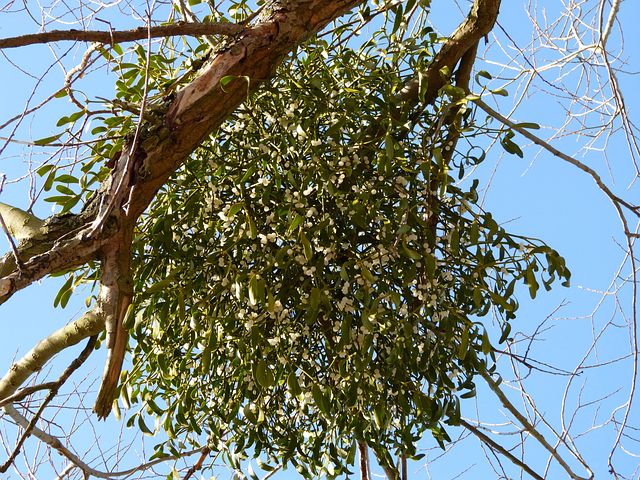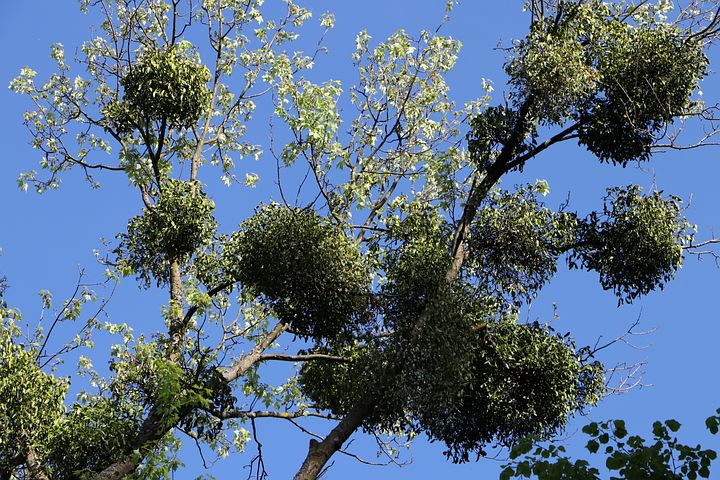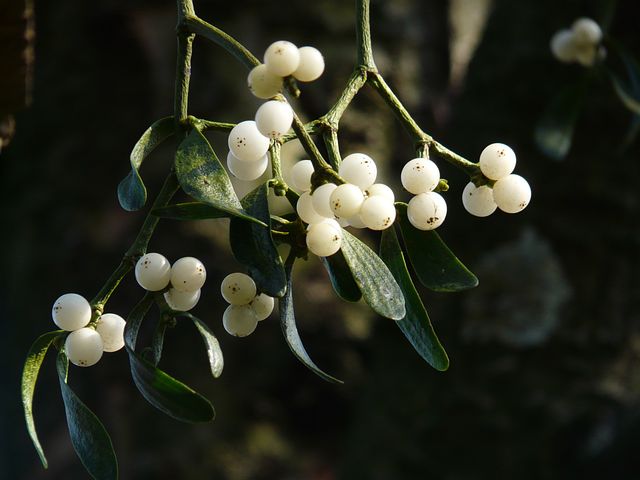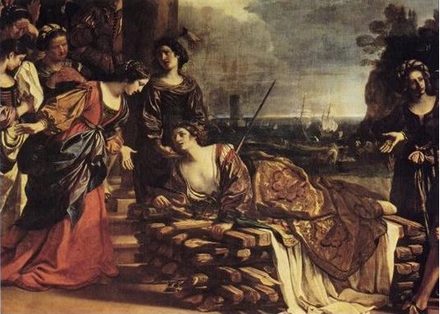Everyone knows the old adage about kissing under the mistletoe, but how did that originate?
Well, we can thank the Romans for that (yes, yes, another vestige of the Roman Empire!). The Romans considered mistletoe to be powerful enough to ward off evil spirits and hung it over doorways to protect their homes. They also associated mistletoe with love and peace and harmony, thereby fostering the notion that kissing under the mistletoe would engender love. Also, in Roman mythology, mistletoe was the means by which Aeneas managed to enter the underworld, which shows the power they attributed to this little weed.
But it wasn’t just the Romans that revered this humble plant. The Greeks called mistletoe “oak sperm”, presumably because it grows as a parasitic plant on the oak tree. The Celts and the Ancient Greeks both thought mistletoe represented male virility; the Celts likened the white berries to the semen of their god of thunder, Taranis, and in the druidic ritual of oak and mistletoe, white-robed druids would climb the sacred oak tree to harvest the mistletoe growing on it. In their herbal medicine tradition, mistletoe was used to cure infertility and the effects of poisoning.
In Victorian England, it was the maids and butlers in the grand old stately homes that made the tradition of kissing under the mistletoe popular. Any man regardless of class, could ask for a kiss under this little plant, and bad luck would befall any woman who refused. A berry was plucked from the plant for each kiss claimed, with the mistletoe losing its magic once the last berry was picked.
The white berried mistletoe is the Viscum album variety that grows in England. Its stems and leaves have a number of medicinal uses. To the herbalists of the Middle Ages, mistletoe continued to be used to address virility and fertility issues, as well as protection against witches and demons. Modern herbalists prescribe it for tension headaches, high blood pressure, neuralgia, gynaecological issues, rheumatics and gout. There is even historical evidence of the use of the plant for treating cancer. However, it is a very toxic and potent remedy and should only be used under professional supervision.
If you are lucky enough to be kissed under the mistletoe this Christmas, don’t forget to pick a berry!
Merry Christmas to you all xx


Visited 1234 Times, 1 Visit today




